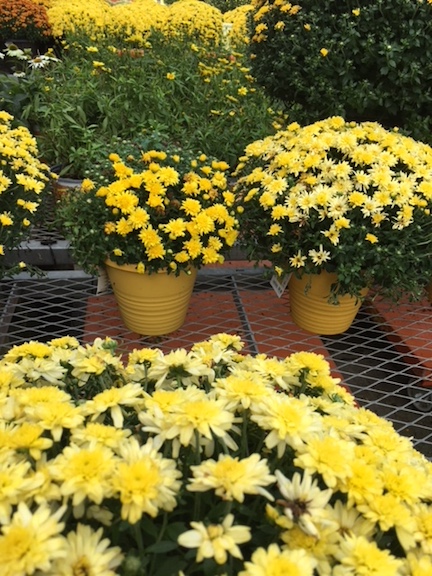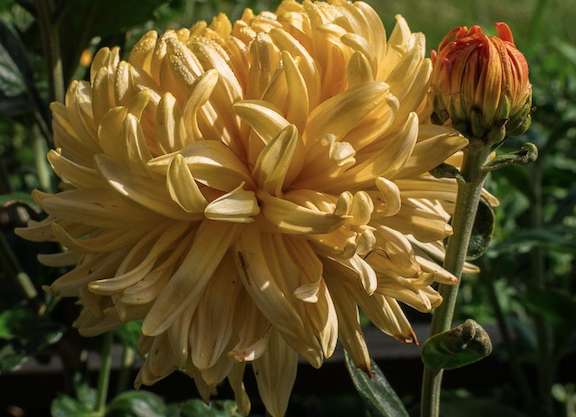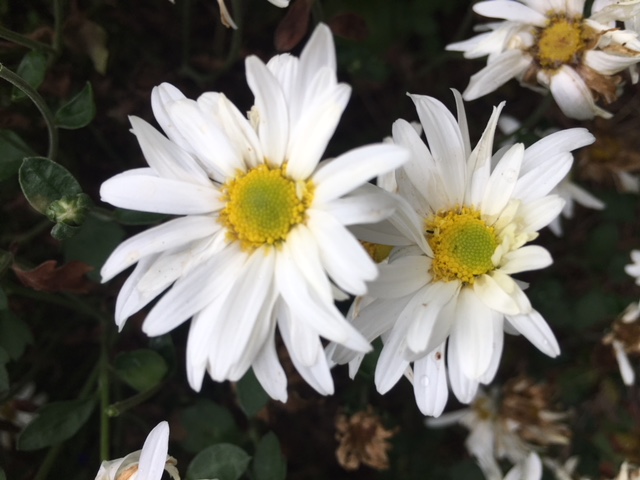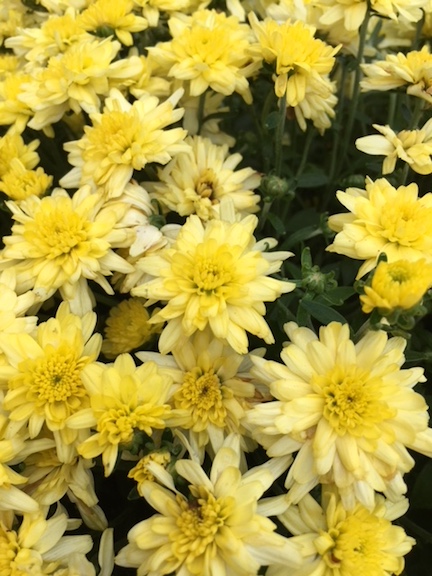Wherever you go these days, from the garden stores to the grocery stores, you’ll see great big balls of flowering plants. These symbols of fall are chysanthemums which are found mostly in yellow and maroon, sometimes in white and occasionally in pink. For a plant that can display astonishing variety of form and color, it’s a little surprising that the tight, mounded variety is so ubiquitous.

Depending on your age, you might best remember chrysanthemums as corsages, so common that they were named “football mums” or “homecoming mums.” I thought these were a part of ancient history but a quick web search indicated that in Texas, Football Mums are a still a very big deal. Not content with just wearing a huge flower, Texans now add long ribbons, cow bells, teddy bears and on and on. It’s a bit of a phenomenon.

If you prefer your chrysanthemums without teddy bears, there are a lot of different ones to choose from. There are 40 species, native to Asia and Northern Europe and countless cultivars developed from these. Chrysanthemums are very ancient plants, as indicated by the fact that Confucius wrote of them in 500 BC. In AD 910, Japan held its first Imperial Chrysanthemum Show and declared it the national flower. There were records of 500 different cultivars by 1630.

Based on the Victorian language of flowers, chrysanthemums symbolized cheerfulness and optimism (especially with a teddy bear attached?). The Chinese consider it a sign of rest and ease and the Japanese take it as a sign of long life and happiness.
Chrysanthemum petals are edible and some say even tasty. Only flowers that have not been sprayed with chemicals should be used for eating. Blanch petals for several seconds before adding to cream soups or salads.
In spite of the onslaught of chrysanthemums right now, a better time to plant them is in spring. But, ironically enough, it’s difficult to find them in the spring in your local garden store! Though they are true perennials, fall planted mums don’t always survive winters. They have been bred and pushed for a glorious one – time display. When they are planted in spring, though, they have a chance to develop a good root system and become established.

Whether you plant them in spring or fall, use them in hanging baskets or as bedding plants, eat them or cuddle with them at night, Chrysanthemums are sure to bring beauty and joy.
